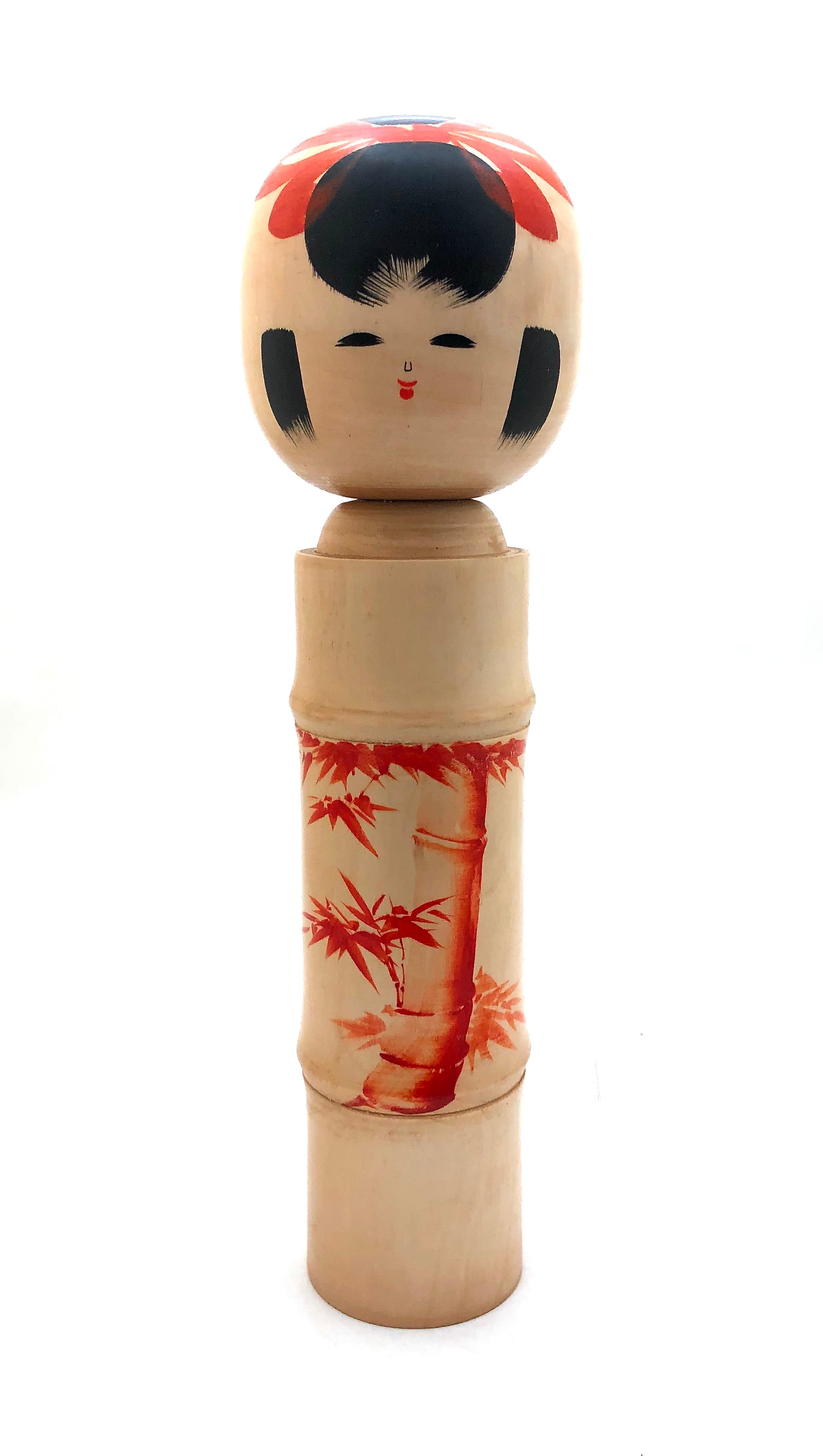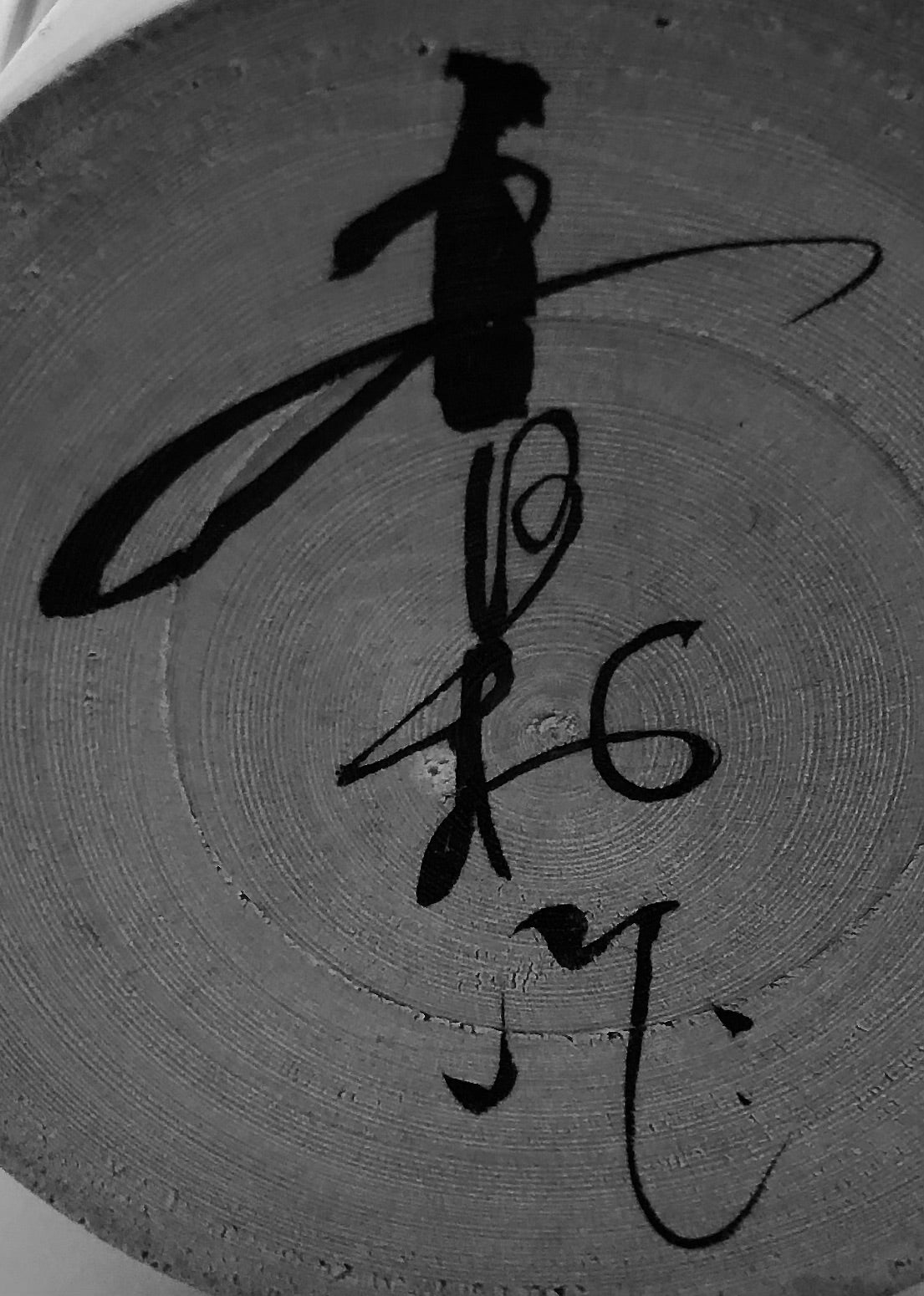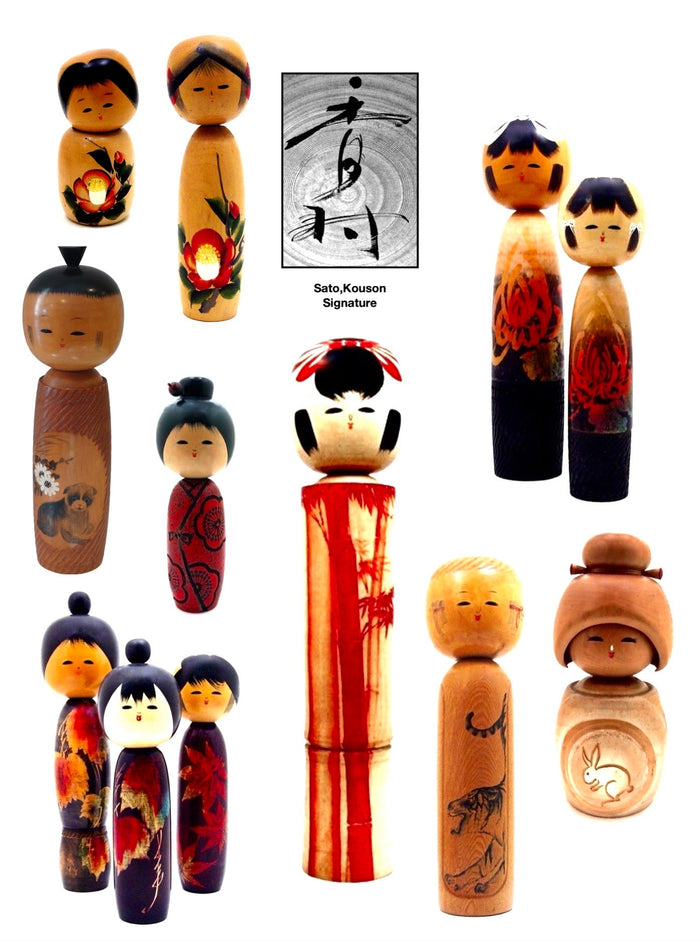

Vintage Sosaku Kokeshi entitled: “Akai take | Red Bamboo” by Sato Kouson (a.k.a. Komura)
Dimensions: 14-00”h
Sato Kouson is one of the few female creative Kokeshi makers recognized as an accomplished artist and worked out of her studio in Fukushima-ken, Kuwaori-machi. This area was at the heart of the 2011 earthquake and tsunami devastation area of Fukushima Prefecture.
This impressive lathe-turned Birch (Kabanoki) Kokeshi with hand painted motif has always been a symbol of prosperity in Japan. For years, people were told to run into the bamboo groves in the event of an earthquake, because the bamboo’s strong root structure would hold the earth together. Images of bamboo are also symbolic of purity and innocence and are auspicious symbolizing long life and vitality.
Here Kouson-san uses vermilion sumi-e’ brushwork on the body that incorporates a simulation of the bamboo ‘node’ that is seen in its natural state. The head of the doll shows a traditional influence with the black bangs, side hair fringes, and tiny expressive mouth. On top of her head is a traditional red bow. Signed on the bottom by the artist.
Condition: Excellent with no imperfections or color loss. Museum quality piece and a perfect doll for the collector of Kouson’s work in the Japanese Kokeshi folk art genre.

Artisan
Woodworker: Sato, Kouson (A.K.A. Kimura)
Biographical History:
One of the few female creative Kokeshi makers recognized as an accomplished artist, Kouson worked from her studio in Fukushima, in the heart of the devastating area of the 2011 earthquake and tsunami. There is little biographical data on Kouson, but as collectors, we felt it was most important to represent all Sosaku Kokeshi artists, whether or not each artist has a written account of his/her life. We show the diversity of cultural values and the creative work produced by a multitude of artists.
In researching old writings through articles and books that remain, it is evident that the Kokeshi Craftsperson not only created beautiful forms as toys, but also kept alive cultural values, customs, and fashion through the extensive representations of Kokeshi dolls. The beauty is in the doll and not the signatures, for most masters never signed their dolls. Later they named the dolls, but only when Westerners insisted on signatures because they did not know the artists, so the carvers began to sign their works, for the carvers wanted to promote sales to make a living, during the seasons that did not provide an environment to continue their otherwise daily work.
Collector's note – descriptive qualities, standard characteristics & ornamentation styles:
Kouson-san had a daring approach to her painting style and was not afraid to make very large and expressive dolls. Her dolls are easily recognized by wonderfully soft and gentle faces, with the bodies’ artwork ranging from simple but elegant sumi-e’ brush strokes to beautifully painted autumn leaves, camellia, (winter rose), or the chrysanthemum, (Kikumon, as related to the Imperial Seal of Japan) and bamboo. She occasionally created Zodiac characters that are quite rare! Not afraid to create very large dolls, her work distances itself from other female artists in the creative genre with her bold approach. She also incorporated “Chatter Work” into the body of some dolls to create a wonderful contrast in texture.
Explore & Learn More about Woodworker: Sato, Kouson (A.K.A. Kimura)